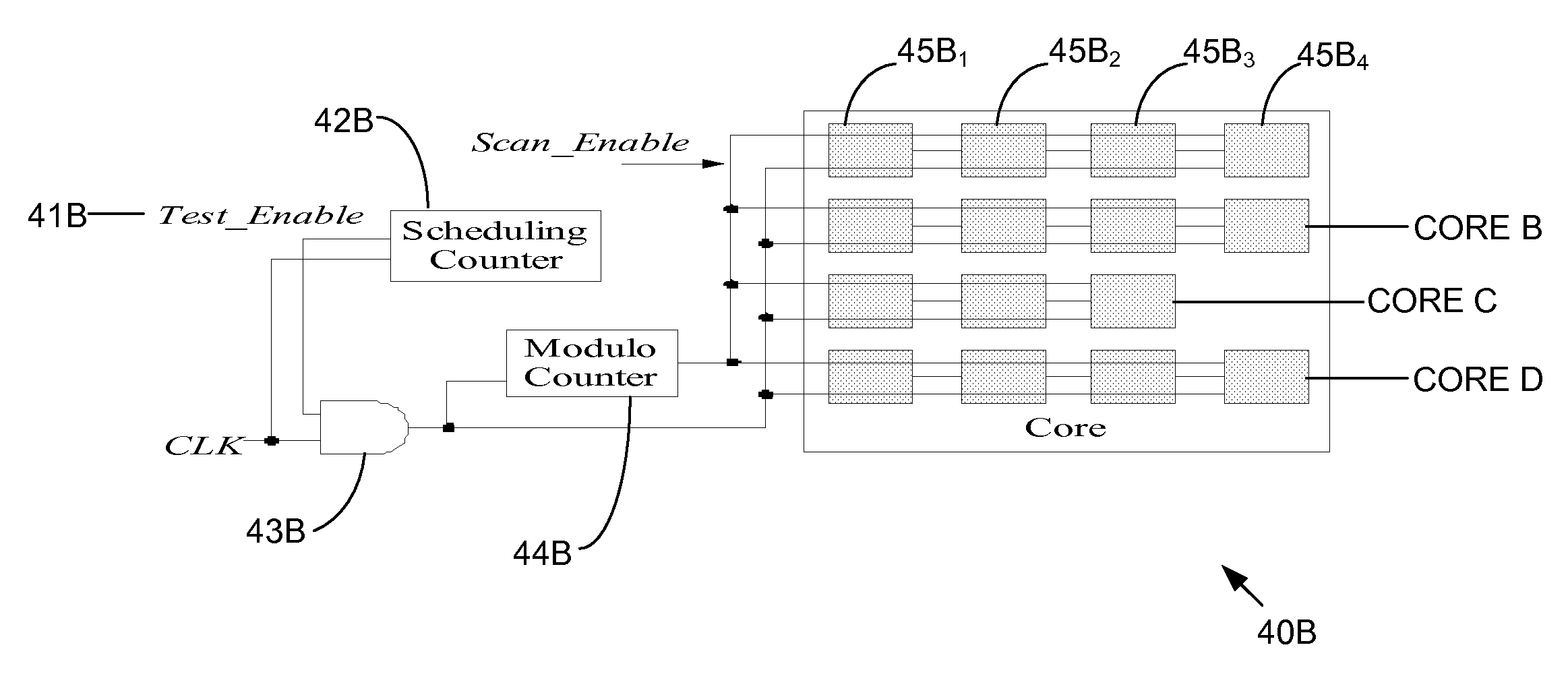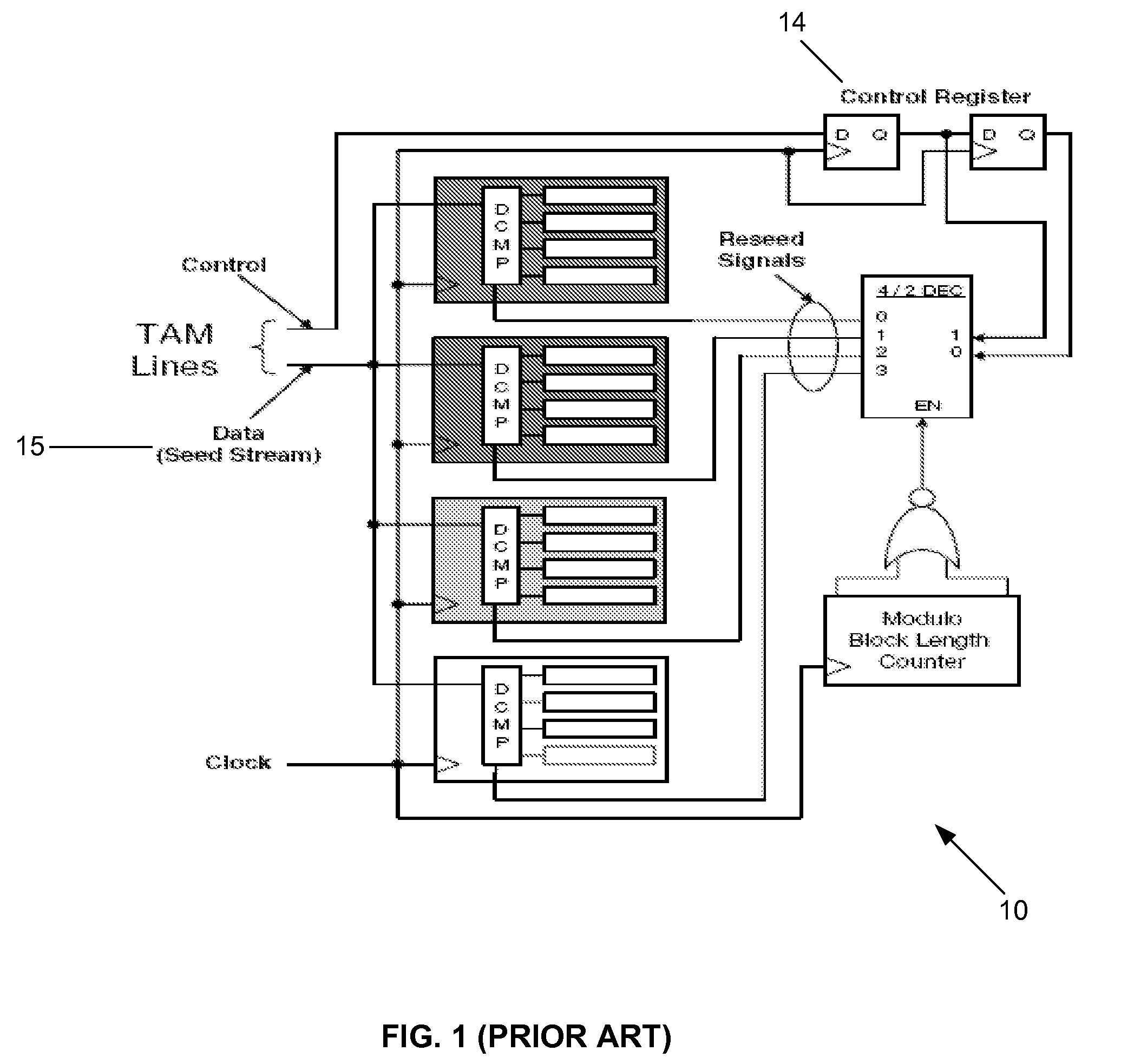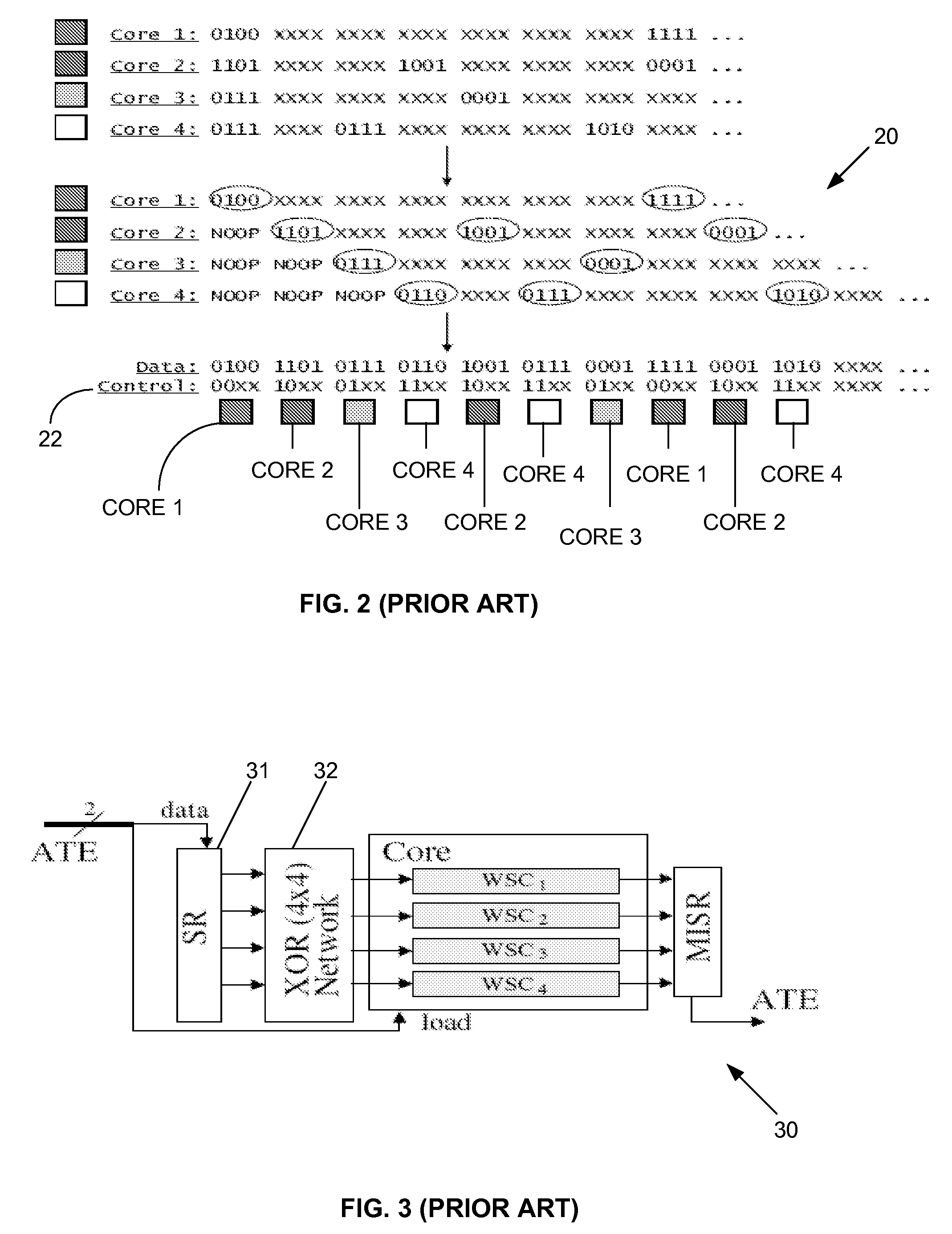Test Data Compression Method for System-On-Chip Using Linear-Feedback Shift Register Reseeding
a technology of shift register and test data, which is applied in the direction of error detection/correction, program control, instruments, etc., can solve the problems of limited applicability of existing test compression techniques, inability to adapt to new compression techniques, and restricted access to internal cores, so as to improve coding efficiency, improve coding efficiency, and optimize testing time and encoding efficiency. the effect of simultaneous optimization
- Summary
- Abstract
- Description
- Claims
- Application Information
AI Technical Summary
Benefits of technology
Problems solved by technology
Method used
Image
Examples
Embodiment Construction
[0028]The invention employs an improved LFSR reseeding technique in [1] to test multiple cores on a System-on-Chip SoC in parallel, such that the testing time and encoding efficiency can be optimized simultaneously. An exemplary embodiment of a test architecture 40A according to the invention is shown in FIGS. 4A and 4B. FIG. 4A depicts an exemplary System-on-Chip SoC architecture in accordance with the invention and FIG. 4B depicts an exemplary system clock 40B for the architecture of FIG. 4A.
[0029]Each of the cores, Core A, Core B, Core C and Core D, is individually scheduled to be tested during one or more arbitrary time intervals. For example, if a core A is scheduled to be testing during time (t0, t1), then A starts receiving data from the phase shifter at time t0, and stops testing before time t1. Therefore, each core should have a separate Test_Enable control signal 41B, coupled to the scheduling counter 42B, which is active only during the scheduled time intervals. The Test_...
PUM
 Login to View More
Login to View More Abstract
Description
Claims
Application Information
 Login to View More
Login to View More - R&D
- Intellectual Property
- Life Sciences
- Materials
- Tech Scout
- Unparalleled Data Quality
- Higher Quality Content
- 60% Fewer Hallucinations
Browse by: Latest US Patents, China's latest patents, Technical Efficacy Thesaurus, Application Domain, Technology Topic, Popular Technical Reports.
© 2025 PatSnap. All rights reserved.Legal|Privacy policy|Modern Slavery Act Transparency Statement|Sitemap|About US| Contact US: help@patsnap.com



